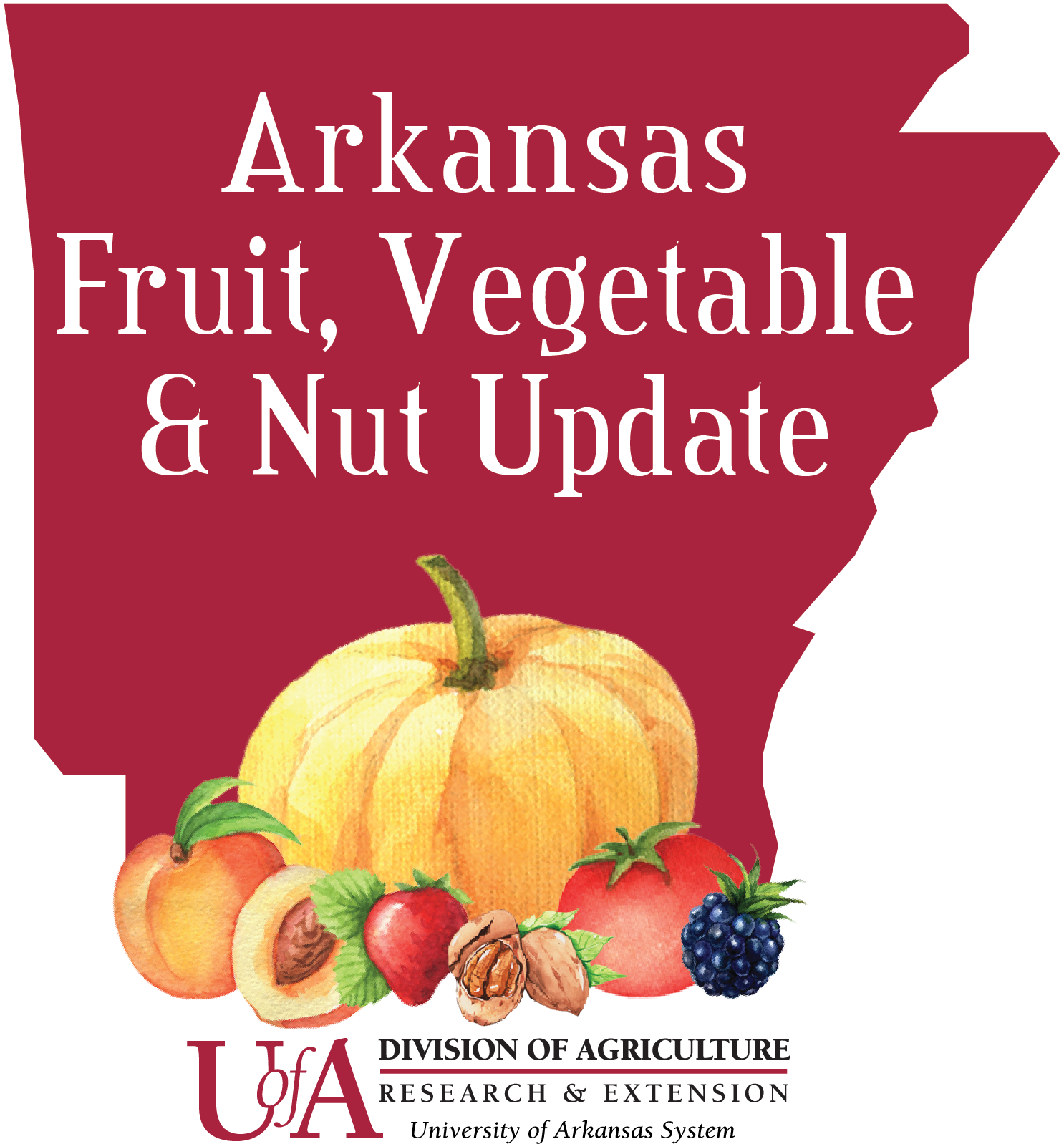
Report: Winter Legume Seeding Rate and Interplanting with Cereal Rye Impact on Cover Crop and Weed Biomass
Cover crops are a cultural production tool that have various benefits for crop production, including adding organic matter to the soil, contributing to weed suppression, and leguminous cover crops can fix nitrogen which increases soil nitrogen content. Weed control and increases in soil organic matter are generally tied to the amount of cover crop biomass (plant growth) that occurs. For example, a cover crop planting that has a “good stand” and high amount of biomass will generally suppress weeds better and potentially add more organic matter to the soil than a “poor stand” with low cover crop biomass. Grass cover crops generally produce more biomass than legume or broadleaf cover crops.
For growers interested in planting a winter cover crop to add organic matter and nitrogen to the soil, while also suppressing winter weeds, a multi-state trial coordinated by the SCCC was conducted to test planting different legume cover crops at multiple seeding rates and interplanted with and without rye.
To assess how different seeding rates of legumes interplanted with and without rye impacts winter weed control and cover crop biomass an experiment was conducted at the University of Arkansas Vegetable Research Station in Kibler, AR. Five winter legume cover crops (berseem clover ‘Frosty’, common vetch, crimson clover ‘Dixie’, hairy vetch ‘Au Merit’, and winter pea ‘Wyo’) were planted at four seeding rates: High (1.5x rate), Full (1x rate), Low (0.5x rate), and Lowest (0.25x rate). The specific seeding rate for each legume are presented in Table 1, and each rate was planted with and without an interplanting of cereal rye. For plots with interplanting of cereal rye, the rye was planted at a rate of 30 lbs/ac. Seeding took place on October 12, 2021using a drill seeder. On April 15, 2022, plots were assessed for weed biomass, legume cover crop biomass, and cereal rye biomass by harvesting the aboveground plant matter in a 0.5 m2 area of the plot, which was then calculated and reported in kg/ha. Each combination of treatments had five replicates.
Table 1. Seeding rates of winter legume cover crops.
| Legume | Lowest Rate, 0.25x (lbs./acre) | Low Rate, 0.5x (lbs./acre) | Full Rate, 1.0x (lbs./acre) | High Rate, 1.5x (lbs./acre) |
|---|---|---|---|---|
| Hairy Vetch 'Au Merit' | 5 | 10 | 20 | 30 |
| Common Vetch | 5 | 10 | 20 | 30 |
| Berseem Clover 'Frosty' | 3 | 6 | 12 | 18 |
| Crimson Clover 'Dixie' | 5 | 10 | 20 | 30 |
| Winter Pea 'Wyo' | 20 | 40 | 80 | 120 |
1. Which winter legume cover crop suppressed weeds the most and had the highest biomass production?
Hairy vetch had the lowest weed biomass (665.38 kg/ha) (Figure 1) of the legume cover crops we tested. However, winter pea had very similar weed biomass to hairy vetch and for some growers there is less concern about winter pea’s potential for setting seed and becoming an escaped weed like there is for hairy vetch. Berseem clover, common vetch and crimson clover had nearly 2-3x higher weed biomass than Hairy vetch and Winter pea. However, statistically Winter pea performed similarly to berseem clover, and common vetch in weed suppression (Figure 1). Note that similar weed suppression was seen for each legume type regardless of the seeding rate. So lower seeding rates resulted in similar weed suppression as higher seeding rates.
Overall hairy vetch had the highest cover crop biomass and winter pea was the next highest biomass producer (Figure 6). However, we saw that seeding rate impacted legume cover crop biomass, so we will talk about those results in more detail in the 3rd section of this report.
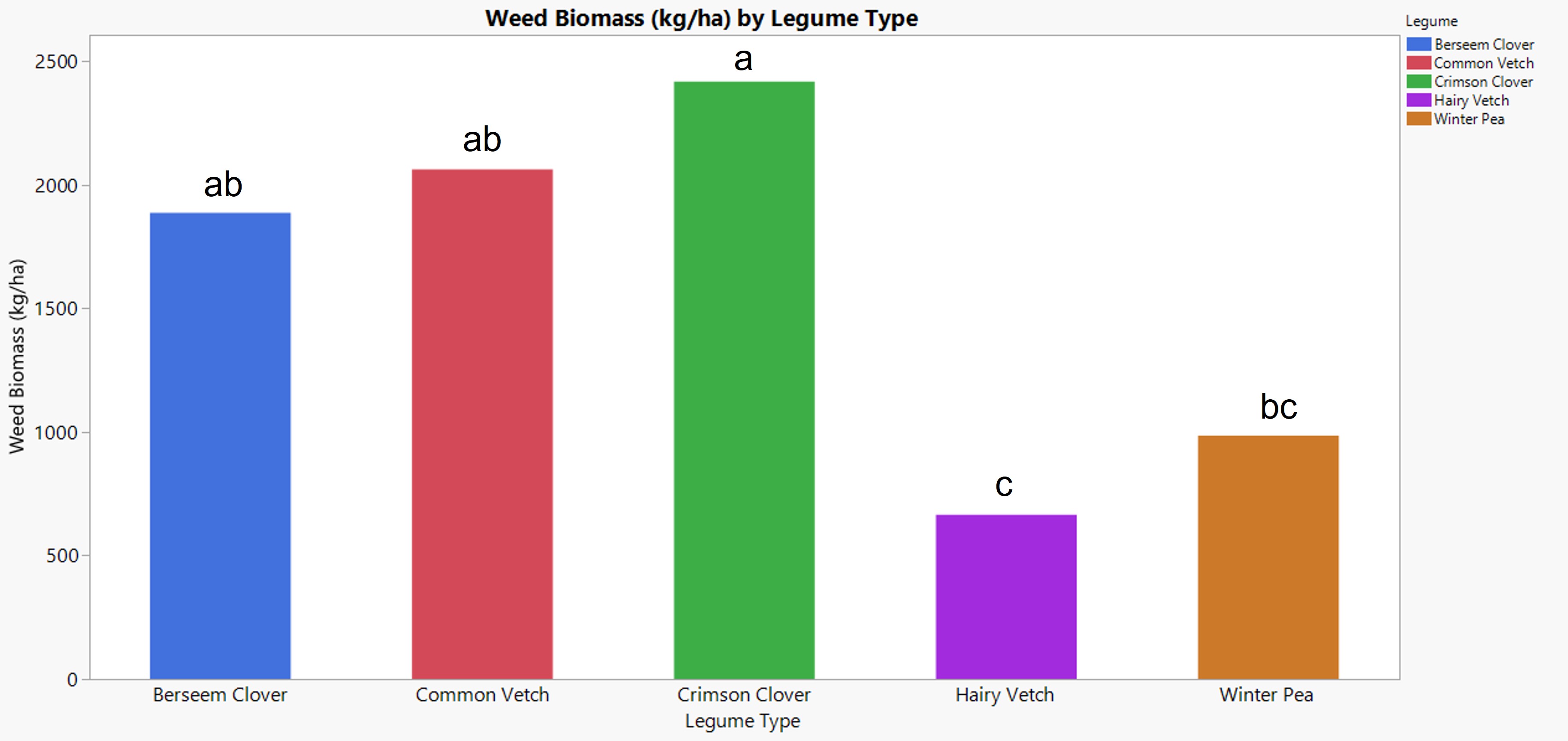
Figure 1. Weed biomass (kg/ha) by type of winter legume cover crop.
2. What are the advantages and disadvantages of interplanting winter legume cover crops with cereal rye?
An advantage of planting cereal rye in a mix with a winter legume cover crop was 50% lower weed biomass (Figure 2). Another advantage was that total (legume + rye) cover crop biomass was about 50% higher when rye was interplanted with a legume (Figure 3). This significantly higher cover crop biomass would result in more organic matter to be incorporated into the soil or used as organic mulch.
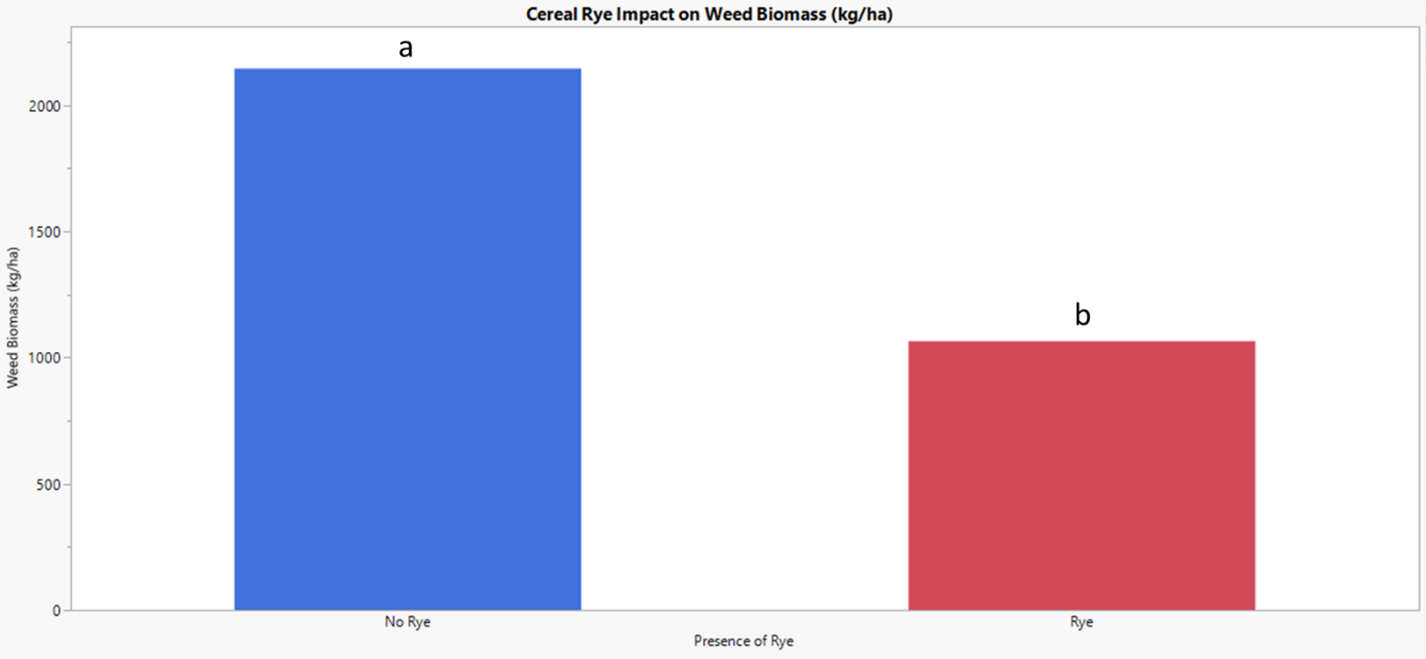
Figure 2. Winter weed biomass (kg/ha) with and without cereal rye in the planting.
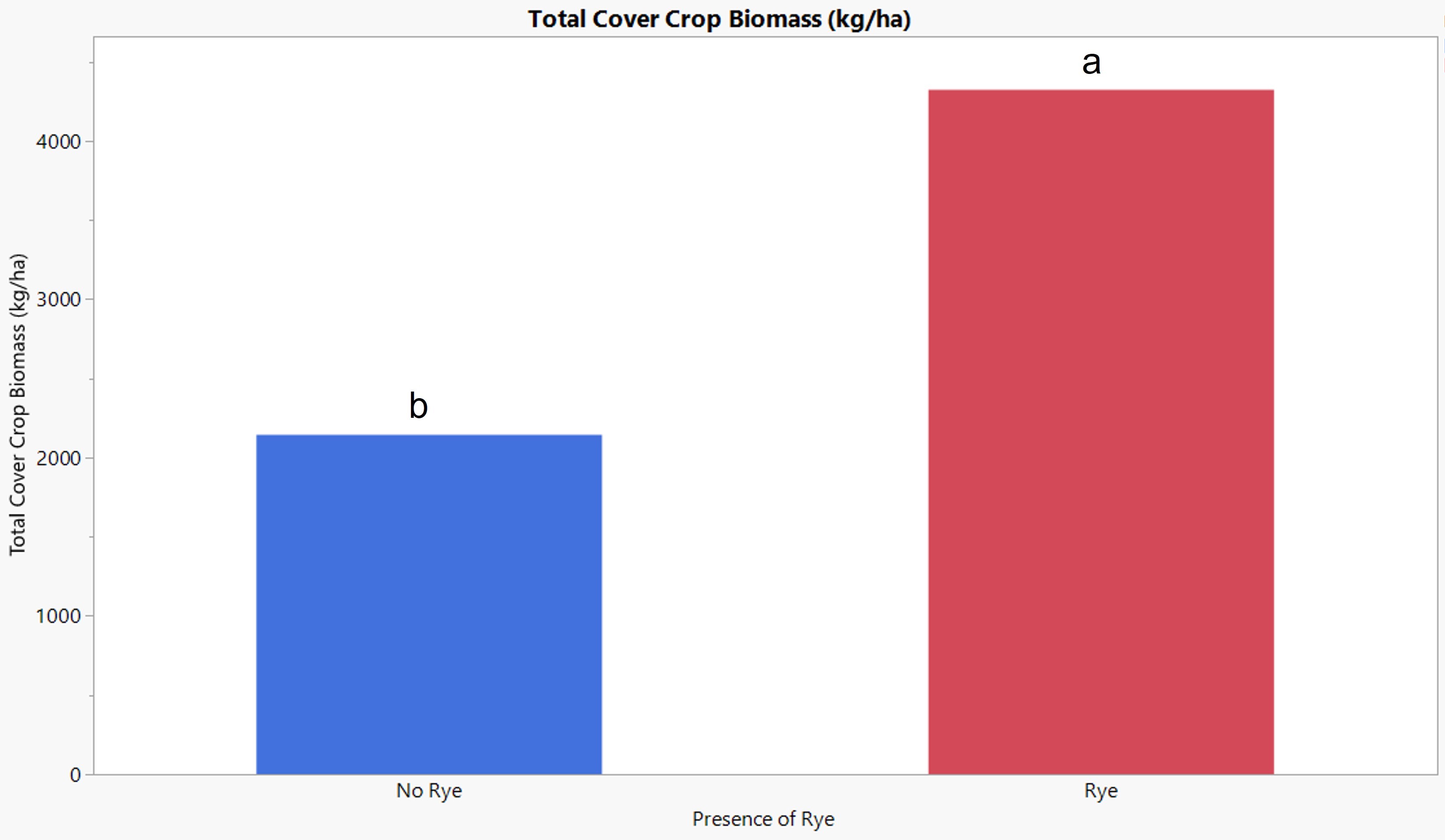
One disadvantage was that legume biomass was about 40% lower when cereal rye was combined with legumes (Figure 4 & 5). This decrease in legume biomass could mean that the legume + cereal rye cover crop mixes have a lower amount of total nitrogen in the biomass compared to legume cover crops planted without cereal rye.
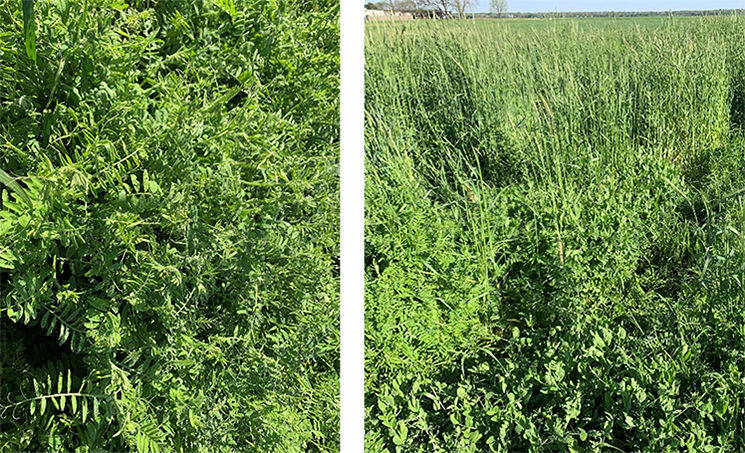

3. Is there an advantage of using a higher seeding rate for winter legume cover crops?
In general, no, the ‘full’ and ‘high’ seeding rates had similar cover crop biomass for each legume species, so planting a higher rate didn’t result in more cover crop biomass.
However, there were some legumes that had higher biomass at the full seeding rates than lower seeding rates. In our experiment the ‘Full rate’ of crimson clover produced significantly more crimson clover biomass compared to ‘Lowest rate’ of crimson clover (Figure 6). This indicates that using a lower seeding rate of crimson clover to save on seed costs, could result in a reduction in cover crop biomass.
However, for all the other legume cover crops we tested statistically similar legume biomass was observed between the ‘Lowest’ and ‘High’ seeding rates for each type. This means that reduced seeding rates could be used for Berseem clover, common vetch, hairy vetch and winter pea and achieve similar results as the full seeding rate which would save on seed costs.
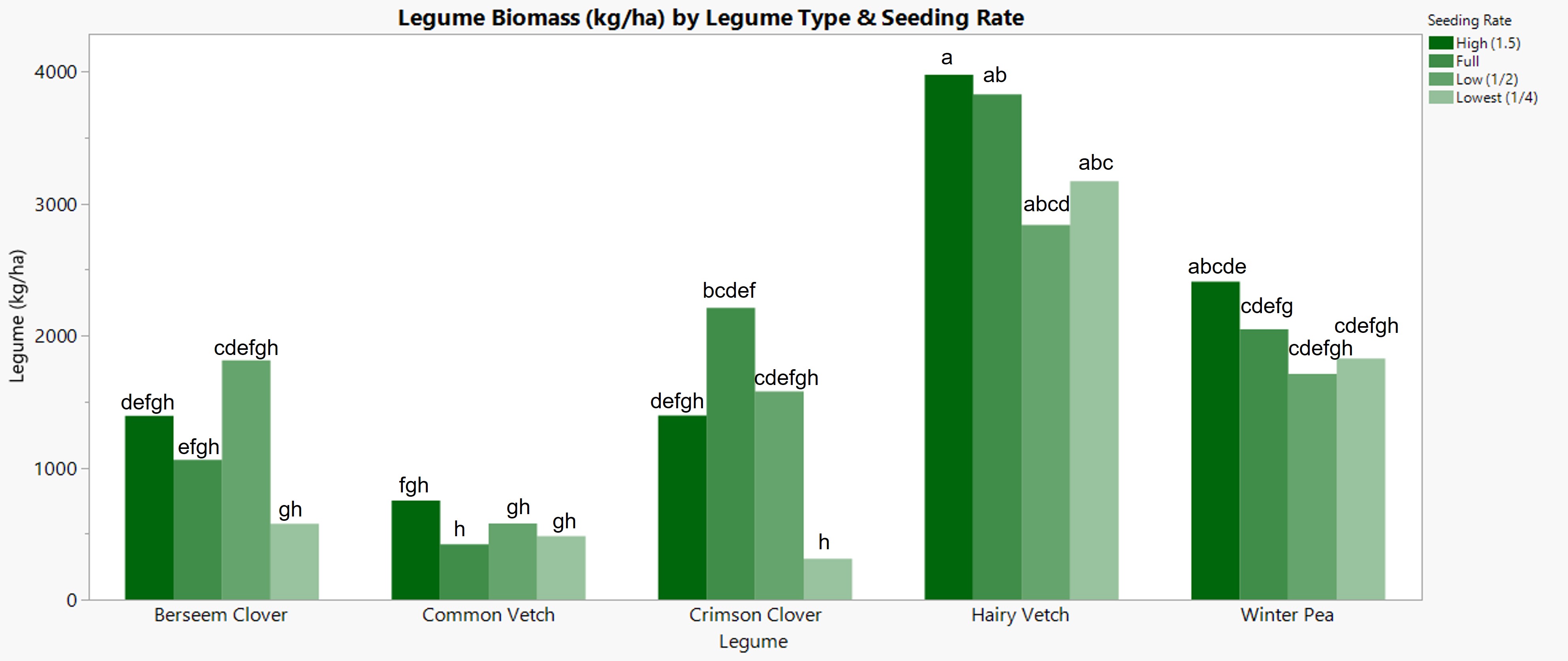
Conclusions:
-
We recommend specialty crop growers plant Hairy Vetch at a rate of 5 lbs./ac or Winter Pea at a rate of 20 lbs./ac rate for growers in Arkansas.
-
These rates are suitable when planting using a drill. Higher rates may be required if broadcast planting due to lower germination rates.
-
-
Planting cover crop mixes (winter legume + cereal rye) on average resulted in a 50% increase in cover crop biomass and 50% reduction in weed biomass compared with planting a legume by itself.
-
Other research at the University of Arkansas has found good results with Cereal Rye + Austrian Pea planted before spring planted watermelon crops (Hotz et al. 2020).
-
We recommend planting winter cover crop mixes in mid-September in northern Arkansas, and late September to early October in South Arkansas.
- This planting period allows time for the legume cover crops to establish well prior to frost and ensures good biomass production prior to early/ mid spring termination for most specialty crops.
- For more information on cover crops in Arkansas: